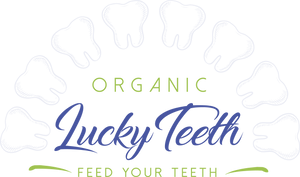
How To Classify Plastics? How To Decide Whether a Plastic Can Be Recyclable or Not?
Many consumers make the mistake of believing that if they see the triangle on a piece of plastic, it can be recycled. This isn't always the case. The number within the triangle is the real indicator as to if the plastic can be recycled or not. Here's a guide on understanding plastics and how you can tell if it can be recycled.
Understanding The Recycling Triangle Numbers
If you pick up a plastic bottle, Tupperware, or any other kind of plastic, you're likely going to find a triangle imprinted on it. In some cases, the triangle may be very faint or it may be in a location that's hard to see.
However, most of the time, you can find the triangle on the bottom of the product. Much like hazard codes, the triangle indicates what kind of plastic was used in its production. There are seven different types.
They include:
- Polyethylene terephthalate
- High-density polyethylene
- Polyvinyl chloride
- Low-density polyethylene
- Polypropylene
- Polystyrene
- Other plastics (acrylic, polylactic fibers, fiberglass, etc)
Depending on the type of plastic, you'll see a number within the triangle. Here's what the numbers mean.
1. Polyethylene Terephthalate
Polyethylene terephthalate, or PET, is the kind of plastic you typically associate with water bottles or other kinds of plastic bottles. This kind of plastic can easily leach and start to grow bacteria. Because of that, it's intended for single use. You don't want to use one of these bottles to continuously drink from.
PET can be cancerous. This is because the chemicals used in the production can start to leech into the substance inside of it.
One ideal aspect of PET is that it is recyclable.
2. High-Density Polyethylene
High-Density Polyethylene or HDPE is the kind of plastic that is used to create milk jugs and detergent containers. It can even be found in some toys and plastic bags. This type of plastic is considered one of the safest plastics and can be recycled.
It doesn't breakdown when exposed to sunlight and can be reused to make strong and durable products like benches and even plastic lumber.
3. Polyvinyl Chloride
Polyvinyl Chloride, or PVC, is often found in toys for children and pets. Yet it can also be made thin and flexible when used as food plastic wrap. You may be more familiar with PVC in its use in plumbing or as sheeting material to protect computer cables.
The problem with PVC is that it has a high-rate of leeching and contains toxins. Only 1% of PVC can be recycled. Yet the products that are made with PVC cannot be reused or recycled.
4. Low-Density Polyethylene
Low-Density Polyethylene, or LDPE, is typically used for products like dryer sheets, the plastic wrapping for bakery products, and shrink wraps. You also find it in the plastic bags commonly floating around at grocery stores. While it is safer to use than PVC, it isn't recycled all that often.
This is because not all products made with LDPE are recyclable though some can be reused.
5. Polypropylene
Polypropylene, or PP, is found in diapers, pails, and in certain food containers. That's because it's tough and acts as a great barrier. PP can be recycled though few people do recycle it. It can also be reused.
6. Polystyrene
Polystyrene, or PS, is famous for the soft packaging of items like eggs and take-out food. It's also often used as a shipping material. It's cheap to make and easily formed.
PS is problematic in that it can leak carcinogens into food when exposed to hot temperatures. It is also not easily recycled.
7. Other Plastics
Other plastics, like BPA, fall under this category. They're typically not recyclable and can cause severe health issues if they leech into a substance that is eaten or swallowed.
Some plastics that use corn fiber, however, are recyclable and biodegradable. You'll need to look for the PLA compostable coding to ensure you can reuse your plastic product.

